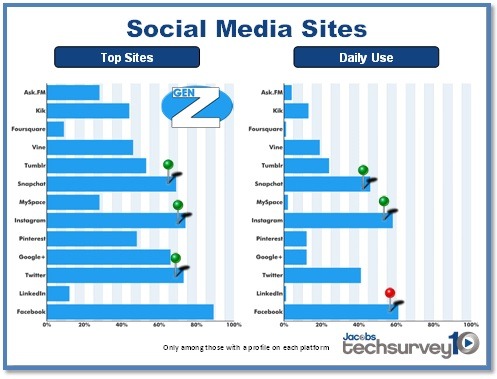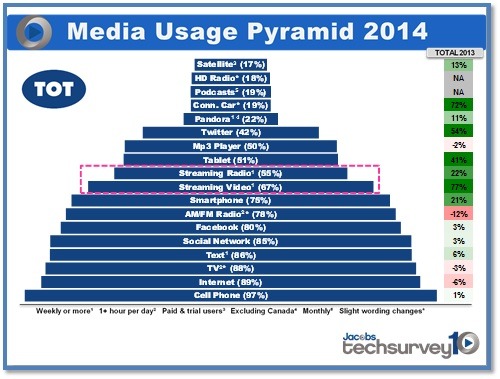The evidence continues to mount that in order to be effective in the social space, learning the art of visuals – photos and videos – has become table stakes.
Last week, a client who has been advertising on Facebook told us that an ad they dreamed up was kicked back because it was too wordy. Facebook knows that in order to be effective as a marketing tool for business of all kinds, it must do more than suggest guidelines – it is dictating the types of ads that work.
For traditional media, this seems counter-intuitive, largely because newspapers, TV, and of course, radio will allow just about anything a client wants to do as long as they pay for it.
But the secret of truly making money in the media space revolves around effectiveness and repeat business. How many times have you heard a campaign on the air that had “failure” written all over it? And you know the spots couldn’t possibly work because the creative was lame or ran totally counter to your brand’s essence?
Facebook is obviously playing a longer game, using their research to help advertisers succeed which, of course, will beget more business.
So consider these guidelines – or maybe we just call them rules:
Sorry – it really is “fine print,” so to simplify the process, here’s the line that really stands out:
“Too much text can look like spam and make people think that your ad is low quality.”
First and foremost, good for Facebook. Guiding the creative for its platform is at the heart of attracting return business. And it tells their clients that there are ways to optimize advertising efforts to generate a better ROI. Aside from public radio, few commercial radio broadcasters even attempt to help advertisers shape copy or strategy to maximize effectiveness.
And the inference from Facebook’s “Grid Tool” is that visuals work better than verbiage. We inherently know this from sharing patterns and in research studies that measure behavior in the social space. Posts and tweets with pictures and videos have a better chance of being noticed and shared.
We also see it loud and clear in Techsurvey10. Consider what’s happening in the social sphere – the sites that are gaining in popularity…and usage. When you focus on those true trendsetters – mostly teens that make up Generation Z – you see that daily Facebook usage is being challenged by Twitter, Instagram, and Snapchat. These last two social platforms are all about visuals – the content that is moving the needle online. On the left are the sites they’re on (think of it as “cume”), and on the right, the sites they use every day.
 Facebook numbers are low across the board for teens – but these other sites – especially those that rely on visuals are generating momentum among young people.
Facebook numbers are low across the board for teens – but these other sites – especially those that rely on visuals are generating momentum among young people.
The final piece of the pie is also from TS10 – and it’s a comparison between streaming audio and video among the overall audience. When you look at the Media Usage Pyramid in our new study, you can see that weekly video streaming far surpasses audio streaming:
 Simply put, the percentage of respondents who stream video is considerably higher than those who stream audio. While two-thirds access streaming video of one kind or another at least weekly, only 55% do the same with audio streams. And with younger consumers, the gap is more pronounced. For CHR fans, it’s 81%/62% – video to audio.
Simply put, the percentage of respondents who stream video is considerably higher than those who stream audio. While two-thirds access streaming video of one kind or another at least weekly, only 55% do the same with audio streams. And with younger consumers, the gap is more pronounced. For CHR fans, it’s 81%/62% – video to audio.
This data should tell us a lot about what attracts consumer attention. As Facebook attempts to shape advertising content that is most effective, to the habits and activities that we continue to track in our surveys, the need to communicate and connect visually has never been greater.
It’s a phenomenon that seems perhaps counter-intuitive for an audio medium. But it’s becoming more obvious with every passing year that video is the secret sauce that motivates interest, sharing, and buzz.
Radio needs to be thinking more visually – whether it’s web video, video features on apps, webcams in the studio and around the station, and photo taking and sharing with the listening audience that can foster more participation and engagement.
Yes, content is king. But so is making that content in a format and style that optimizes our efforts. Tomorrow, we’ll talk to a broadcaster who is using video very wisely. And what’s notable is that he’s not in the Top 100 markets.
- Media And Technology In 2025: Believe It Or Not! - April 18, 2025
- In Radio, You Just Never Know - April 17, 2025
- The Secret To Making A Great Podcast (And Great Radio) - April 16, 2025





Leave a Reply